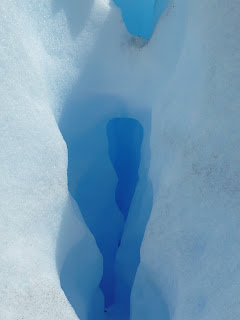After successfully docking at the tiny port of Puerto Montt we decided to head for the picturesque town of Puerto Varas some 20km north. This was the first place during our whole trip we just ‘rocked up’, ergo - turned up without a reservation and expecting a bed. To our delight we found a hostel called ‘Ellenhaus’ within 200mtrs from where the bus dropped us. There is a massive German influence here in Northern Patagonia and the Chilean Lake District thanks to immigration and colonisation during the 19th century, evident in the alpine lodge style architecture. It felt a little like the Bavarian Alps. After a quick bag drop we stumbled across a German beer festival. As our friends know, we don’t really drink alcohol but we decided to have a couple of pints of Golden Kross and something else sounding very German - just to blend in. Naturally, we followed this with a German frankfurter with sauerkraut. Hey why not? This is Chile you know...
Puerto Varas German Beer Festival
Hot Dog Aleman
After a brief stay in Puerto Varas we caught a 6hr bus North to Pucon, famously infamous for the infinitely famous active ‘Volcan Villarrica’. The last eruption was in 1984 involving a cascade of molten lava spewing dangerously close to the town of Pucon. In winter this volcano now becomes a ski resort for the daring. However, it’s summer here meaning it is possible to climb to the summit with the help of a guide.
We quickly booked ourselves a guide and headed up Villarrica at 7am the next morning. The weatherman got it bang on. The morning sky was azure blue with the menacing Villarrica smoking in the distance, a stark reminder of what was to come.
Close proximity of Villarrica Volcano to Pucon
The climb itself is 1400 mtrs to the summit at 2980 mtrs. There was an option to take the chairlift the first 400 mtrs which of course we declined on the basis it was cheating. From the chairlift most of the climbing was done in snow. Our original group of 25 was cut to 7 splitting the cheaters from the stupid. Our group consisted of Rach, myself, Marios (a Spanish speaking Greek from Guildford) and 4 young Isrealis fresh out of 3 years of National Service. No pressure there then. After some tips on how to use an ice axe and walking in snow our guide set a good pace. We quickly passed the ‘chair lift cheaters’ and after some hairy moments reached the summit in around 5 hours.
The accent up Villarrica
The summit itself was bizzare. Thunderous noises from within the crater were followed by plumes of sulphurous gas. We were advised it is not a good idea to stick around and Rach was finding the sulphur pretty uncomfortable.
Rach & Marios at the crater
Smoking crater
Rach having just having had a very near miss when the ground of the crater gave way - try a zoom on her face it is a picture!
After a quick circuit of the craters rim we donned our waterproofs and, with plastic paddles between our legs, we sledged down the mountain belly laughing all the way. 5 hours up 1 hour down.
The following day we attended a BBQ organised by Miriam and Francesca, the girls who run the El Refugio Hostel. Around 20 guests from at least 6 countries enjoyed the steak and vino well into the early hours. We left early due to an early start the following day.
The following morning we caught an early bus to the un-pronounceable Huerquehue National Park for an 18km trek called the Los Lagos Circuit. It visits numerous lakes set amongst the spectacular forests and mountains of Chile’s Lake District. The walk itself involved around 700 mtrs of height gain and 7hrs walking. The sun was scorching but thankfully the forest provided ample cover. That said, we attracted the attention of many horse flies, like normal flies only 3 times bigger with a nasty bite.
A crystal clear Lago Chico
View of Volcan Villarrica from a ´Los Lagos´mirador
After a couple of days walking we visited the Los Pozones thermal springs an hour or so from Pucon. The varying temperature pools were scattered along a crystal clear riverbank in a dramatic valley. A great way to relax, pool hopping and sunbathing before heading back to Pucon to catch the night bus to Santiago, Chile’s capital city.
Los Pozones Termas

















































